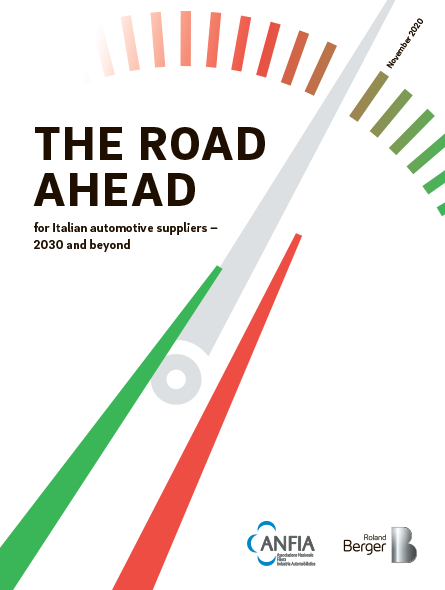The road ahead for Italian automotive suppliers – 2030 and beyond
![{[downloads[language].preview]}](https://www.rolandberger.com/publications/publication_image/rb_stu_610_italian_car_industry_cover_download_preview.png)
Italian automotive suppliers must embrace a transformation agenda. But to emerge as winners they need the support of industrial policy.


Today's automotive supplier industry in Italy is fragmented, featuring many mid-market suppliers working in vertical domains with skill sets built around traditional product technologies. These players have a strong track record: They have overcome challenges in the past and strengthened Italy's positioning in a number of legacy areas in the global supply chain. But with consumers' mobility habits changing as fast as the underlying automotive technology, companies now need to take action to prepare themselves for the new mobility landscape of 2030 and beyond. A revolution is underway – one that even the global pandemic is incapable of stopping.

Familiar consumer behaviors are giving way and technological advance creating unexpected challenges and opportunities for the passenger vehicle industry. The drivers of this disruption can be captured by the acronym MADE: new Mobility trends, Autonomous technology, Digital features and powertrain Electrification. COVID-19 is changing the speed with which each of these four areas is developing by reshaping supply and demand. But while the eventual shape of the industry is as yet unknown, industry players can help mold the future by adopting an explorative approach, embracing the evolution of the industry and expanding their spectrum of activities to include new products, business models and partnerships.
Opportunities are opening up for suppliers on all sides. To identify where the greatest potential lies, we spoke to industry insiders, associations, academics, senior managers at ANFIA and automotive specialists at Roland Berger. We also carried out benchmark analyses of the top 100 national automotive suppliers in Italy and Germany and examined the last decade of automotive industrial policy in eight major countries around the world. Our research indicated that the domains with the greatest potential in the period to 2030 – those showing the strongest forecast growth combined with the highest level of technological disruption – are electronics (ADAS software, ADAS ECUs, infotainment and ADAS sensors) and the powertrain (battery packs, power modules and e-motors). Other important areas include transmission, cockpit and thermal management.
"Italy must offer a strong value proposition for global investors."
Italy has strengths and weaknesses in each of these key domains. To successfully navigate the period to 2030, players have a range of potential strategies at their disposal, from increasing scale and leveraging flexibility to pursuing innovative projects on a European scale. What is clear, is that they will need the support of government in the form of industrial policy – for example, incentives for consolidation and collaboration, support for R&D, new faculties at universities and "automotive taskforces" at a national level. With this backing, we believe that suppliers can master the transformation agenda and in so doing guarantee their future success.
![{[downloads[language].preview]}](https://www.rolandberger.com/publications/publication_image/rb_stu_610_italian_car_industry_cover_download_preview.png)
Italian automotive suppliers must embrace a transformation agenda. But to emerge as winners they need the support of industrial policy.